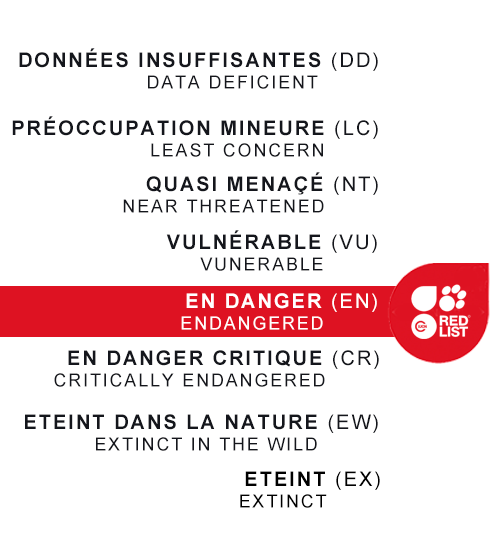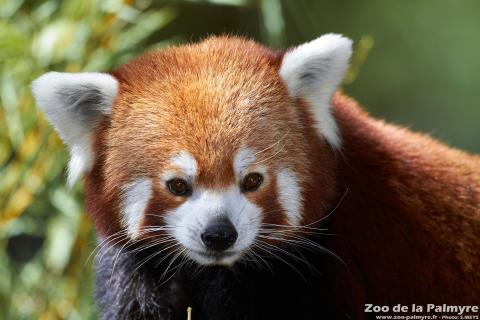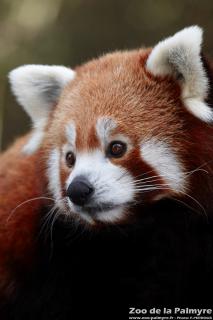Red Panda

Red Panda

-
Class
Mammalia -
Order
Carnivora -
Familly
Ailuridae
-
 51-73 cm
51-73 cm -
 3-6 kg
3-6 kg -
 4.5 months
4.5 months -
 1-4
1-4 -
 8 to 10 years in the wild
8 to 10 years in the wild
-
Diet
omnivorous (bamboo leaves up to 90%, roots, small vertebrates, birds' eggs, insects) -
Habitat
montane forests with dense bamboo-thicket understorey -
Range
Asia (Eastern Himalayas: India, China, Nepal, Bhutan, Myanmar) -
 This species is part of a European Breeding Program
This species is part of a European Breeding Program
-
Population in the wild
En diminution -
IUCN REDLIST status


Its taxonomy has long been discussed. It had been previously classified in the family Procyonidae (racoons) and Ursidae (bears). Today it belongs to a family of which it is the only representative, the Ailuridae.
Forepaws have an elongated bone that acts like a thumb, adapted for grasping bamboo stems while it eats the leaves. To efficiently digest bamboo, otherwise low in protein and fat, the red panda must eat a large quantity each day and also selects the most nutritious species in its habitat.
Breeding is strictly seasonal: mating takes place between January and mid-March, with births occurring after 135 days of gestation, generally in June and July.
Neonates weigh less than 130 g and are born with thick grayish fur. They get the fur pattern of adults at around 2 months of age. Their eyes open after 18 days, but the cubs do not leave the nest until they are 3 months old. They reach adult size around one year old and are sexually mature 6 months later.
Red pandas live in the temperate forests of the Himalayas, at altitudes between 1,500 and 4,800 m. They are threatened by habitat destruction and poaching, and classified as "Endangered" on the IUCN Red List.





